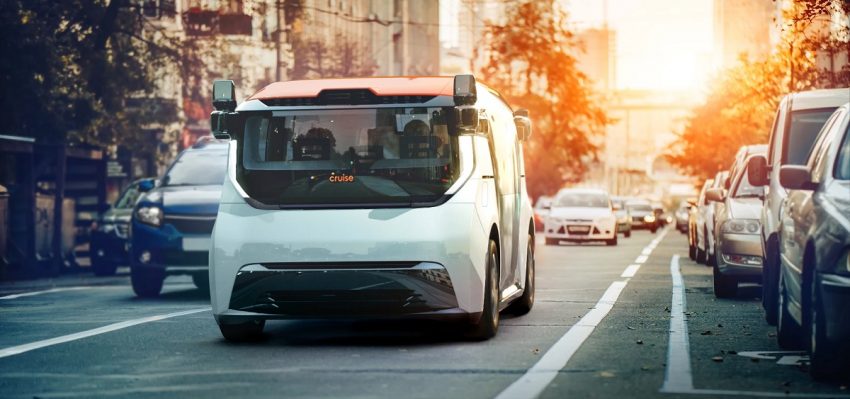As several of the major automakers continue to develop fully autonomous self-driving vehicles, some think it’s time to put the vehicles on the road. That includes GM and Ford, both of which have petitioned the National Highway Traffic Safety Administration (NHTSA) to deploy self-driving vehicles without a steering wheel or pedals.
According to a recent report from Reuters, both GM and Ford are asking the NHTSA for an exemption to put upwards of 2,500 self-driving vehicles on the road annually, the maximum allowed under law. The vehicles will be used for ride sharing and delivery services, and will not be sold to consumers.
GM and its autonomous vehicle technology division, Cruise, filed its petition with the NHTSA in February, asking to deploy self-driving vehicles without any of the usual human pilot bits and pieces, such as a steering wheel, turn signals, mirrors, or windshield wipers. That includes the Cruise Origin self-driving robotaxi, which was officially revealed in January of 2020 and is designed for ride-sharing.
Back in 2019, GM petitioned the NHTSA to deploy Chevy Bolt EV models equipped with Cruise self-driving technology, but without a steering wheel or brake pedal. GM withdrew that petition late in 2020. Just yesterday, GM issued a statement that it would work with the NHTSA “as their review continues and remain eager in seeing the fully autonomous Cruise Origin on the road in the years to come.”
Meanwhile, GM’s crosstown rival, Ford, submitted a petition to deploy fully autonomous vehicles on public roads back in July of 2021. Ford hopes to have self-driving vehicles on the road sometime early this decade for ride-share and delivery services. Additionally, Ford informed the NHTSA that equipping a self-driving vehicle with “active driving controls and communications would introduce an unacceptable risk to safety.”
The NHTSA states that it will look over the automakers’ petitions to make sure that safety is prioritized, and to ensure that considerations are made for those with disabilities, as well as considerations are made with regard to equity and the environment. Both petitions were published separately this week, and have been opened to public comment for 30 days.
Subscribe to GM Authority for more GM business news, GM technology news, GM electric vehicle news, and around-the-clock GM news coverage.

















Comments
Interesting technology, but I wonder is anyone asking for it? Is this just a push by the manufacturers just because. At least where I am, I don’t know of anyone who is ready to hop in a driverless pod without an emergency backup control. Other places may be different.
I have no use fir them. This is just a solution to a problem that does not exist and a colossal waste of money.
Good for dedicated precincts like Airports and campuses, but for everywhere else I can see this vehicle constantly waiting for its path to clear before moving off.
WHY? This has to be the dumbest and most dangerous idea out there today!